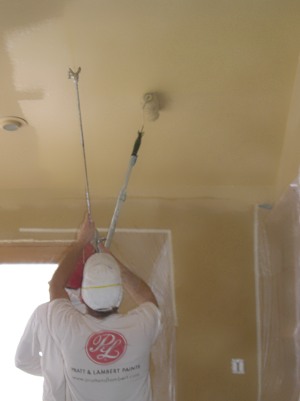How To Back Roll Paint
Painting a large surface like a wall, ceiling, or floor can be a daunting task, but using the right techniques can make all the difference. Back rolling paint is a technique that can help you achieve a smooth and even finish on your painting project. By using a roller to apply the paint and a brush to smooth out any lines or streaks, back rolling can ensure that your paint adheres properly and looks professional.
In this article, we’ll go over the steps involved in back rolling paint to help you achieve a successful painting project. We’ll discuss the importance of back rolling paint, the technique and its benefits, and how to properly prepare the room and tools. We’ll also cover how to apply the paint using proper technique, and how to properly clean up and maintain your tools and equipment.
Get the Fail-Safe Paint Color Playbook (Free PDF)
36 proven colors • 8 ready palettes • trim & sheen guide • printable testing cards.
Whether you’re a professional painter or a DIY enthusiast, back rolling paint is an important technique to master for achieving a smooth and even finish on your painting project. By following the tips and techniques outlined in this article, you’ll be well on your way to achieving professional-looking results on your painting project.

Importance of Back Rolling Paint
Back rolling paint is essential for several reasons. First, it helps to ensure that the paint is applied evenly across the surface, avoiding any patches or unevenness. Second, it helps to ensure that any lines or streaks left behind by the roller are smoothed out, resulting in a smooth and even finish. Finally, it helps to ensure that the paint is properly absorbed by the surface and will adhere properly.
Get the Fail-Safe Paint Color Playbook (Free PDF)
36 proven colors • 8 ready palettes • trim & sheen guide • printable testing cards.
Understanding Back Rolling
Before you start back rolling paint, it’s important to understand the technique and its benefits. Back rolling involves using a roller to apply the paint and then using a brush to smooth out any lines or streaks left behind. Understanding this technique is crucial to ensure that your painting project is successful.
Preparing the Room and Tools
Before you can start back rolling paint, you need to prepare the room and tools properly. This includes cleaning and sanding the surface, masking off any areas that need to be protected, and gathering the necessary tools like rollers, brushes, and trays.
Applying the Paint
When it comes to back rolling paint, proper technique is key. This includes using the roller to apply the paint and the brush to smooth out any lines or streaks. It’s important to work in small sections, allowing each section to dry before moving on to the next. This helps to ensure that the paint is absorbed properly and will adhere to the surface.
Clean-up and Maintenance
Proper clean-up and maintenance of your tools and equipment is essential for the longevity of your painting tools. This includes cleaning your rollers and brushes thoroughly after each use and storing them properly. It’s also important to regularly inspect your tools for any signs of wear or damage and replace them as necessary.
Conclusion
Back rolling paint is an important technique for ensuring a smooth and even finish on your painting project. By understanding the technique, properly preparing the room and tools, and using proper technique, you can achieve professional-looking results. Remember to always follow safety precautions and properly maintain your equipment for best results.
